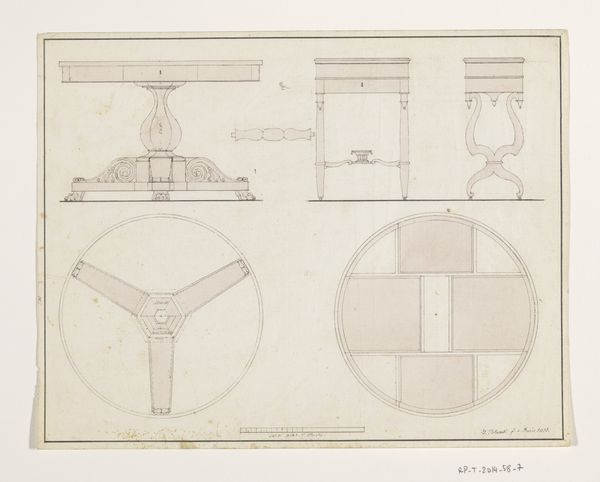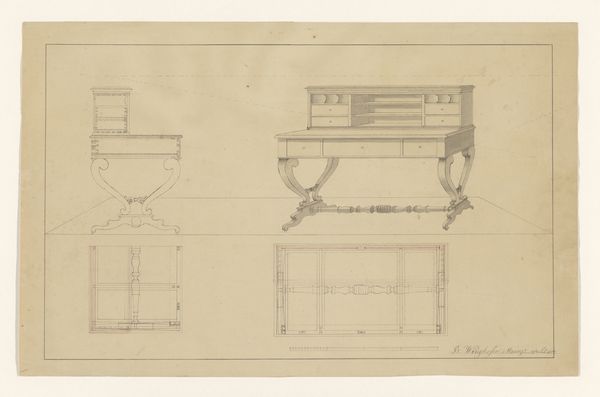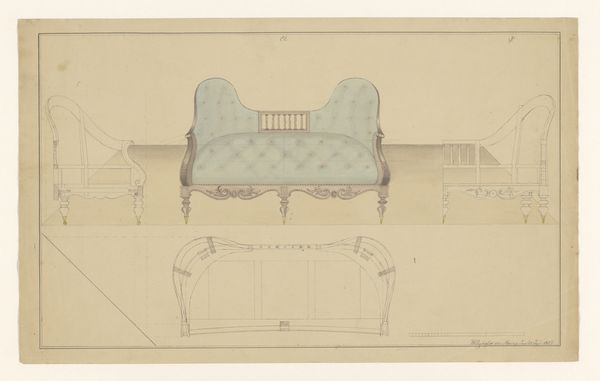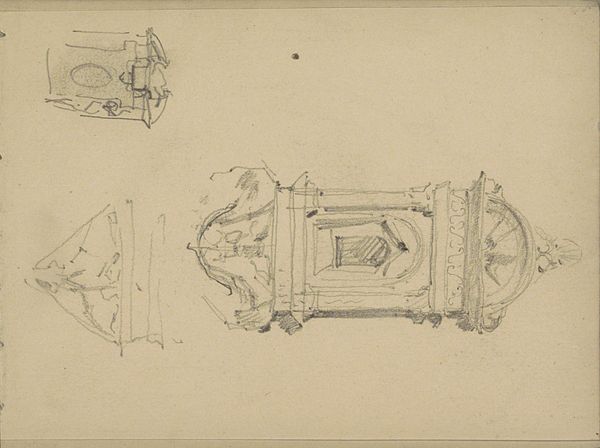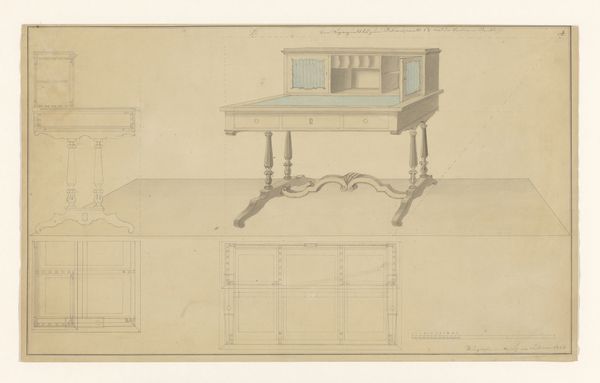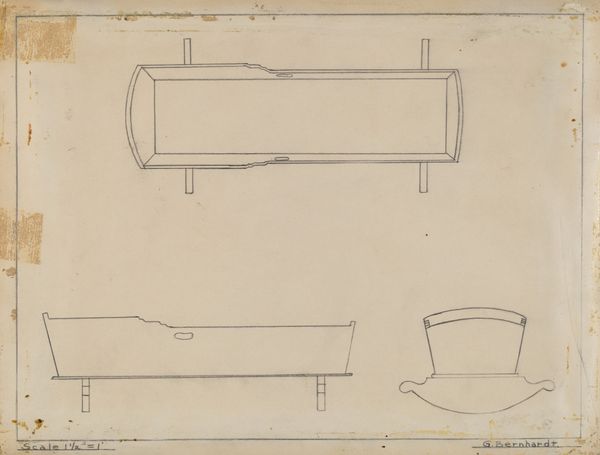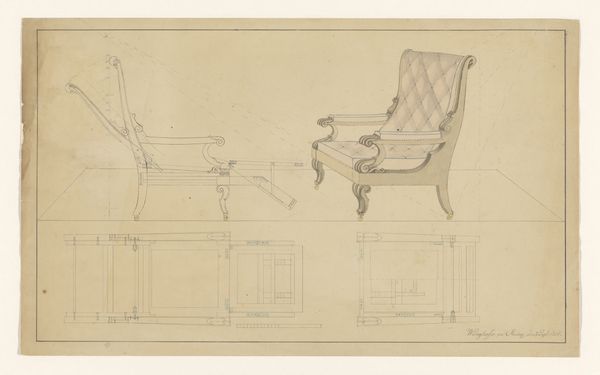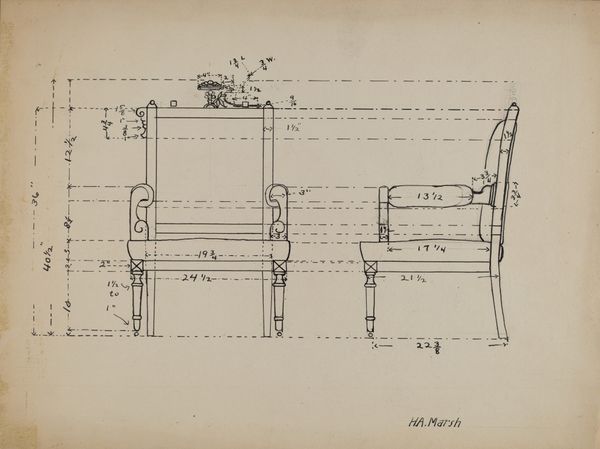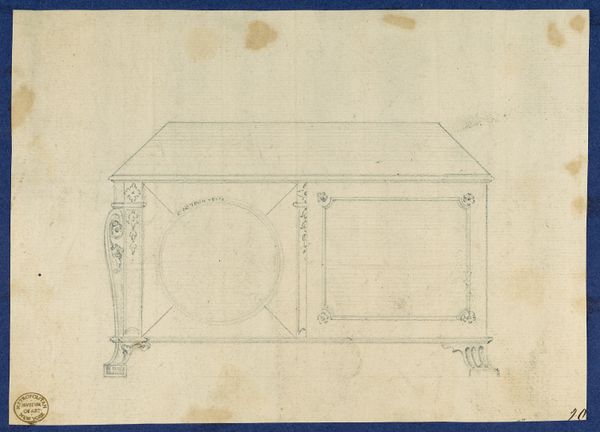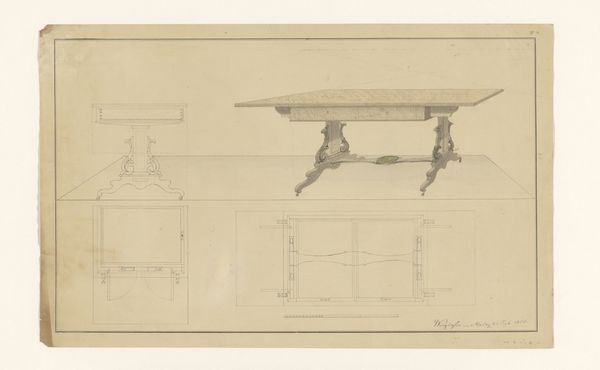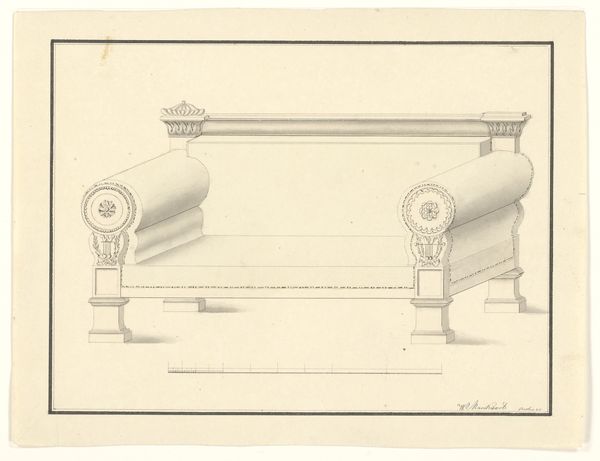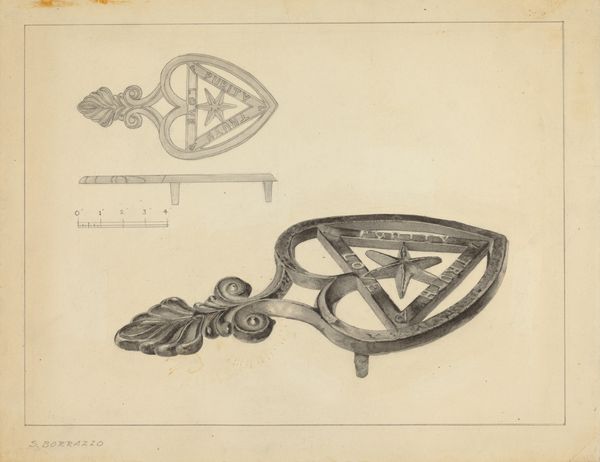
Ontwerp voor een klaptafel en een canapé, beide met zijaanzicht en plattegronden, en detail van een leuning van de canapé 1852
0:00
0:00
drawing, paper, pencil
#
drawing
#
aged paper
#
toned paper
#
light pencil work
#
sketch book
#
etching
#
paper
#
form
#
personal sketchbook
#
sketchwork
#
pencil
#
line
#
sketchbook drawing
#
storyboard and sketchbook work
#
decorative-art
#
sketchbook art
Dimensions: height 270 mm, width 472 mm
Copyright: Rijks Museum: Open Domain
Here we see B. Winghofer's design for a folding table and a canapé. Without a precise date, it's tricky to pin down the cultural context of this design, but the neoclassical flourishes visible in the table's legs and the canapé's frame hint at the late 18th or early 19th century. These kinds of furnishings would have been available to only a small number of privileged people. The design reflects a desire for elegance and refinement. The drawing itself speaks to the world of artisanal production and the design process. Before mass production, furniture makers relied on drawings like these to communicate their ideas and guide their craft. Understanding the social conditions in which art and design are produced requires delving into a range of historical resources from trade records to social commentaries. In doing so, we can better understand art and design and how they reflect and shape the societies in which they’re created.
Comments
No comments
Be the first to comment and join the conversation on the ultimate creative platform.
